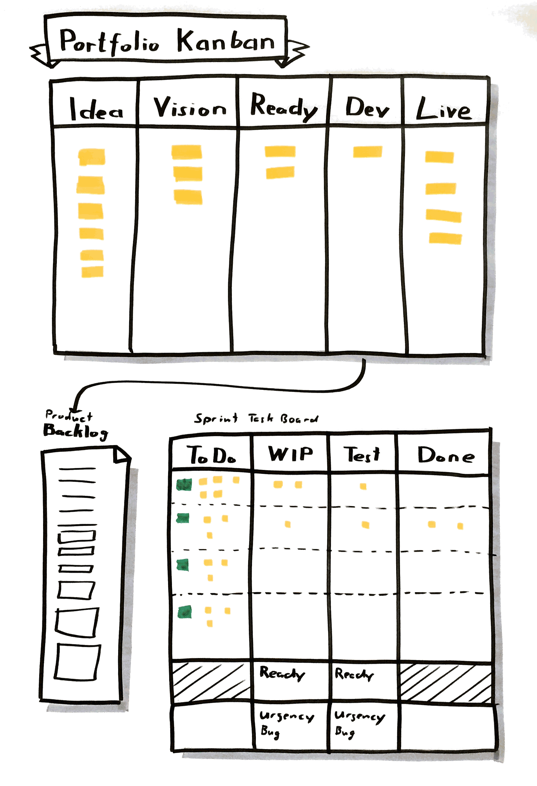We understand the term ‘scaled agility’ to mean that every level of a company is operating in an agile manner. In operative areas, cross-functional teams self-organise their work on products. These collaborations are coordinated at the tactical level, and the company management prioritises the key projects at the strategic level.
Management: role models for the company
Our experience shows that achieving sustainable change within a company requires that the company management acts in an agile manner as well. This allows them to experience the challenges themselves and gives them more credibility. Their function as role models who can create pull during the change process and have a positive effect on employee motivation should not be underestimated.
The agile company – where to begin?

This board enables you to prioritise all projects according to their value, which helps you to focus and to avoid taking on too much in one go. The time needed to complete an individual project is often significantly underestimated. Lower workloads increase the speed of implementation significantly. The frequency of meetings at the management level also has an impact on the success of agile working methods. When long monthly meetings are replaced by more frequent, shorter ones, executives are able to recognise obstacles earlier and react more flexibly.
In conclusion, this kind of transformation process may be lengthy, but we’ve seen time and again in our daily work that success is much more sustainable when executives lead by example!



